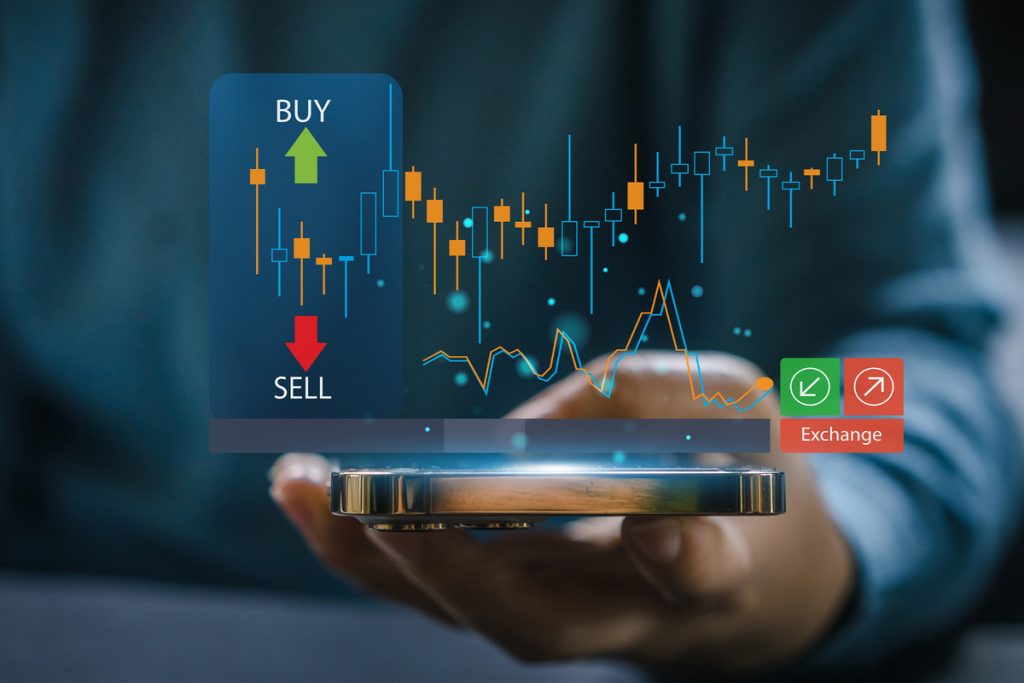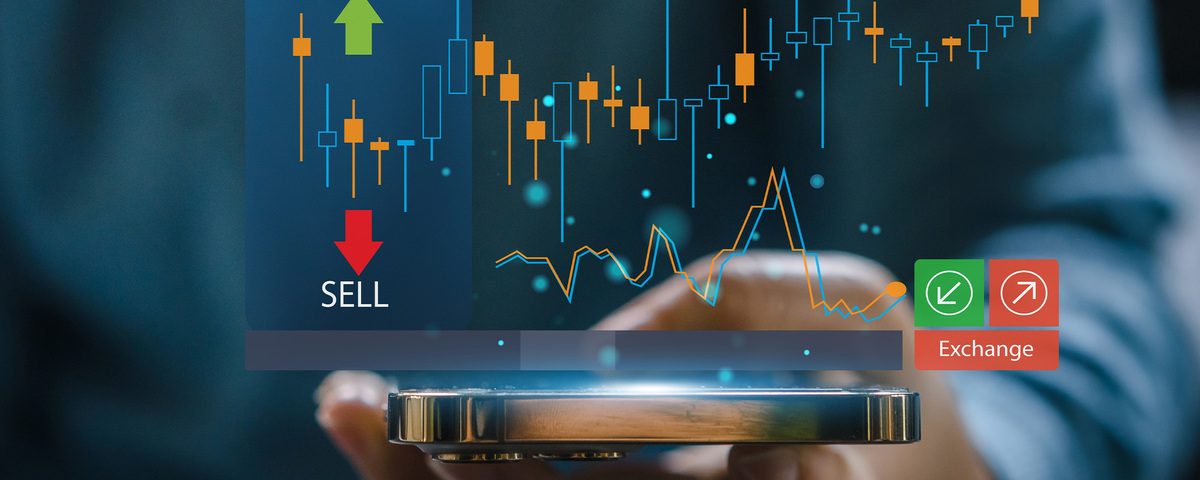
The Importance of Leverage in Forex: A Comprehensive Guide
12/07/2024
How to Create a Forex Trading Plan: A Comprehensive Guide
12/07/2024Understanding Margin in Forex: A Comprehensive Guide
Introduction to Margin in Forex Trading
Margin is a crucial concept in Forex trading that allows traders to control larger positions with a relatively small amount of capital. It acts as collateral for the leverage provided by brokers, enabling traders to amplify their potential profits and losses. Understanding margin is essential for effective risk management and successful trading. This comprehensive guide will delve into the intricacies of margin in Forex trading, explaining how it works, its importance, and how to use it responsibly. Whether you are a beginner or an experienced trader, this article will provide valuable insights into the role of margin in Forex trading.

What is Margin in Forex Trading?
Margin in Forex trading refers to the amount of money required to open and maintain a leveraged position. It is essentially a security deposit that a trader must provide to their broker to cover potential losses. Margin allows traders to access larger positions than their actual account balance would otherwise permit.
How Margin Works
When a trader opens a leveraged position, a portion of their account balance is set aside as margin. This margin acts as collateral for the borrowed funds provided by the broker. The amount of margin required depends on the leverage ratio and the size of the position.
Example of Margin
Suppose a trader wants to open a position worth $100,000 with a leverage ratio of 50:1. The margin required would be calculated as follows:
[ \text{Margin Required} = \frac{\text{Position Size}}{\text{Leverage Ratio}} ]
[ \text{Margin Required} = \frac{100,000}{50} = \$2,000 ]
In this example, the trader needs $2,000 in their account to open the $100,000 position.
Types of Margin in Forex Trading
Initial Margin
Initial margin, also known as the opening margin, is the amount of money required to open a new leveraged position. It is a percentage of the total position size and varies depending on the leverage ratio and the broker’s requirements.
Calculating Initial Margin
To calculate the initial margin, use the following formula:
[ \text{Initial Margin} = \frac{\text{Position Size}}{\text{Leverage Ratio}} ]
Maintenance Margin
Maintenance margin is the minimum amount of equity required to keep an open leveraged position. If the account balance falls below the maintenance margin level, the trader may receive a margin call from their broker.
Calculating Maintenance Margin
Maintenance margin is typically a percentage of the initial margin and varies depending on the broker’s requirements. For example, if the maintenance margin requirement is 50% of the initial margin, and the initial margin is $2,000, the maintenance margin would be $1,000.
Free Margin
Free margin is the amount of money available in a trader’s account that can be used to open new positions or maintain existing ones. It is calculated as the difference between the account equity and the margin used.
Calculating Free Margin
To calculate free margin, use the following formula:
[ \text{Free Margin} = \text{Account Equity} – \text{Margin Used} ]
Margin Level
Margin level is a percentage that indicates the health of a trading account. It is calculated by dividing the account equity by the margin used and multiplying by 100. A higher margin level indicates a healthier account, while a lower margin level indicates a riskier account.
Calculating Margin Level
To calculate the margin level, use the following formula:
[ \text{Margin Level} = \left( \frac{\text{Account Equity}}{\text{Margin Used}} \right) \times 100 ]
Margin Call and Stop-Out Levels
Margin Call
A margin call occurs when the account equity falls below the maintenance margin level. When this happens, the broker may request the trader to deposit additional funds to bring the account back to the required margin level. If the trader fails to meet the margin call, the broker may close some or all of the open positions to prevent further losses.
Example of a Margin Call
Suppose a trader has an account equity of $5,000 and an open position with a margin requirement of $2,000. If the position moves against the trader and the account equity falls to $1,500, the broker may issue a margin call, requesting the trader to deposit additional funds to meet the required margin level.
Stop-Out Level
The stop-out level is the point at which the broker automatically closes open positions to prevent further losses. This occurs when the margin level falls to a predetermined percentage, usually set by the broker.
Example of a Stop-Out Level
If a broker has a stop-out level of 20% and the trader’s margin level falls to 20% or below, the broker will automatically close some or all of the trader’s open positions to bring the margin level back up.
The Importance of Margin in Forex Trading
Amplifying Potential Profits
Margin allows traders to control larger positions with a smaller amount of capital, amplifying potential profits. By using leverage, traders can take advantage of small price movements to achieve significant returns.
Example of Amplified Profits
Suppose a trader has $1,000 in their account and uses a leverage ratio of 50:1 to open a position worth $50,000. If the currency pair moves by 1% in the trader’s favor, they would earn a profit of $500 (1% of $50,000), a 50% return on their initial investment.
Enhancing Trading Opportunities
Margin enables traders to diversify their trades and take advantage of multiple opportunities simultaneously. By controlling larger positions with less capital, traders can spread their risk across different currency pairs and trading strategies.
Example of Enhanced Opportunities
With $10,000 in their account, a trader using a leverage ratio of 50:1 can control positions worth $500,000. This allows the trader to open multiple positions in different currency pairs, increasing their exposure to various market opportunities.
Efficient Use of Capital
Margin allows traders to use their capital more efficiently. Instead of tying up a large amount of money in a single position, traders can use margin to open multiple positions with a smaller amount of capital, maximizing their potential returns.
Example of Efficient Capital Use
A trader with $5,000 in their account can use a leverage ratio of 100:1 to control positions worth $500,000. This efficient use of capital allows the trader to take advantage of more opportunities and potentially achieve higher returns.
Risks Associated with Margin Trading
Amplified Losses
While margin can amplify profits, it can also magnify losses. A small adverse movement in the market can result in significant losses, potentially exceeding the trader’s initial investment.
Example of Amplified Losses
Using the same example as above, if the currency pair moves 1% against the trader, they would incur a loss of $500 (1% of $50,000), a 50% loss on their initial investment.
Margin Calls and Stop-Outs
Margin calls and stop-outs are significant risks associated with margin trading. If the market moves against the trader, they may receive a margin call or have their positions automatically closed by the broker, resulting in realized losses.
Example of Margin Call and Stop-Out
If a trader fails to meet a margin call and their margin level falls below the stop-out level, the broker will close their open positions to prevent further losses. This can result in the trader losing a significant portion of their account balance.
Increased Emotional Stress
Trading with margin can increase emotional stress and lead to impulsive decisions. The potential for significant losses can cause traders to panic and deviate from their trading plans.
Example of Emotional Stress
A trader facing a margin call may feel pressured to deposit additional funds or make impulsive trades to recover losses. This emotional stress can lead to poor decision-making and further losses.
Best Practices for Using Margin in Forex Trading
1. Understand Your Risk Tolerance
Before using margin, it’s essential to understand your risk tolerance and financial goals. Assess how much capital you can afford to lose and choose a leverage ratio that aligns with your risk tolerance.
2. Use Proper Risk Management
Implementing proper risk management techniques is crucial when trading with margin. Set stop-loss orders to limit potential losses and protect your capital. Determine your position size based on your risk tolerance and the size of your trading account.
3. Start with Lower Leverage
For beginners, it’s advisable to start with lower leverage ratios and gradually increase as you gain experience and confidence. Using lower leverage helps minimize the risk of significant losses while allowing you to learn and refine your trading strategies.
4. Monitor Market Conditions
Stay informed about market conditions and economic events that can impact currency prices. Volatile markets can increase the risk of significant losses when trading with margin. Monitoring market conditions helps you make informed decisions and adjust your leverage accordingly.
5. Avoid Overleveraging
Overleveraging occurs when a trader uses too much leverage relative to their account size. This increases the risk of margin calls and significant losses. Avoid overleveraging by using a leverage ratio that is appropriate for your account size and risk tolerance.
6. Keep a Trading Journal
Maintaining a trading journal helps track your trades, analyze performance, and identify areas for improvement. Record details such as margin used, position sizes, entry and exit points, and the reasons for taking each trade. Reviewing your trades helps you learn from your successes and mistakes.
Regulatory Aspects of Margin
Global Margin Regulations
Margin regulations vary by country and regulatory authority. Different jurisdictions have different rules regarding the minimum margin requirements that brokers must adhere to.
United States
In the United States, the Commodity Futures Trading Commission (CFTC) and the National Futures Association (NFA) regulate Forex brokers. The minimum margin requirement for retail traders is typically 2% (50:1 leverage) for major currency pairs and
5% (20:1 leverage) for minor currency pairs.
European Union
The European Securities and Markets Authority (ESMA) sets the margin requirements for Forex trading in the European Union. The minimum margin requirement for retail traders is 3.33% (30:1 leverage) for major currency pairs and lower for minor and exotic pairs.
Australia
The Australian Securities and Investments Commission (ASIC) regulates Forex brokers in Australia. The minimum margin requirement for retail traders is 3.33% (30:1 leverage) for major currency pairs.
Other Jurisdictions
Margin regulations vary in other jurisdictions, with some countries allowing higher leverage ratios and others imposing stricter limits. Traders should be aware of the margin regulations in their respective countries and choose brokers that comply with local regulations.
Case Studies on Margin in Forex Trading
Case Study 1: Successful Trade with Margin
A trader has $2,000 in their account and uses a leverage ratio of 50:1 to open a position worth $100,000 in the EUR/USD pair. The trader buys at 1.1000 and sells at 1.1050, capturing a 50-pip gain.
Calculation
- Pip Value: $10 per pip (standard lot)
- Profit: 50 pips x $10 = $500
Using margin, the trader makes a $500 profit on a $2,000 investment, a 25% return.
Case Study 2: Margin Call and Stop-Out
A trader has $2,000 in their account and uses a leverage ratio of 100:1 to open a position worth $200,000 in the USD/JPY pair. The trader buys at 110.00 and the price drops to 109.50, resulting in a 50-pip loss.
Calculation
- Pip Value: $20 per pip (standard lot)
- Loss: 50 pips x $20 = $1,000
Due to the loss, the trader’s account balance falls to $1,000, resulting in a margin call. If the trader fails to deposit additional funds, the broker will close the position to prevent further losses.
Conclusion
Margin is a powerful tool in Forex trading that allows traders to control larger positions with a relatively small amount of capital. While it offers the potential for higher returns, it also carries significant risks. Understanding how margin works, its benefits, and its risks is crucial for effective trading. By using proper risk management techniques, starting with lower leverage, and avoiding overleveraging, traders can harness the benefits of margin while mitigating its risks. Staying informed about regulatory aspects and maintaining psychological discipline further contribute to successful margin use. With this comprehensive guide, you are now equipped with the knowledge to use margin effectively and responsibly in your Forex trading journey.



